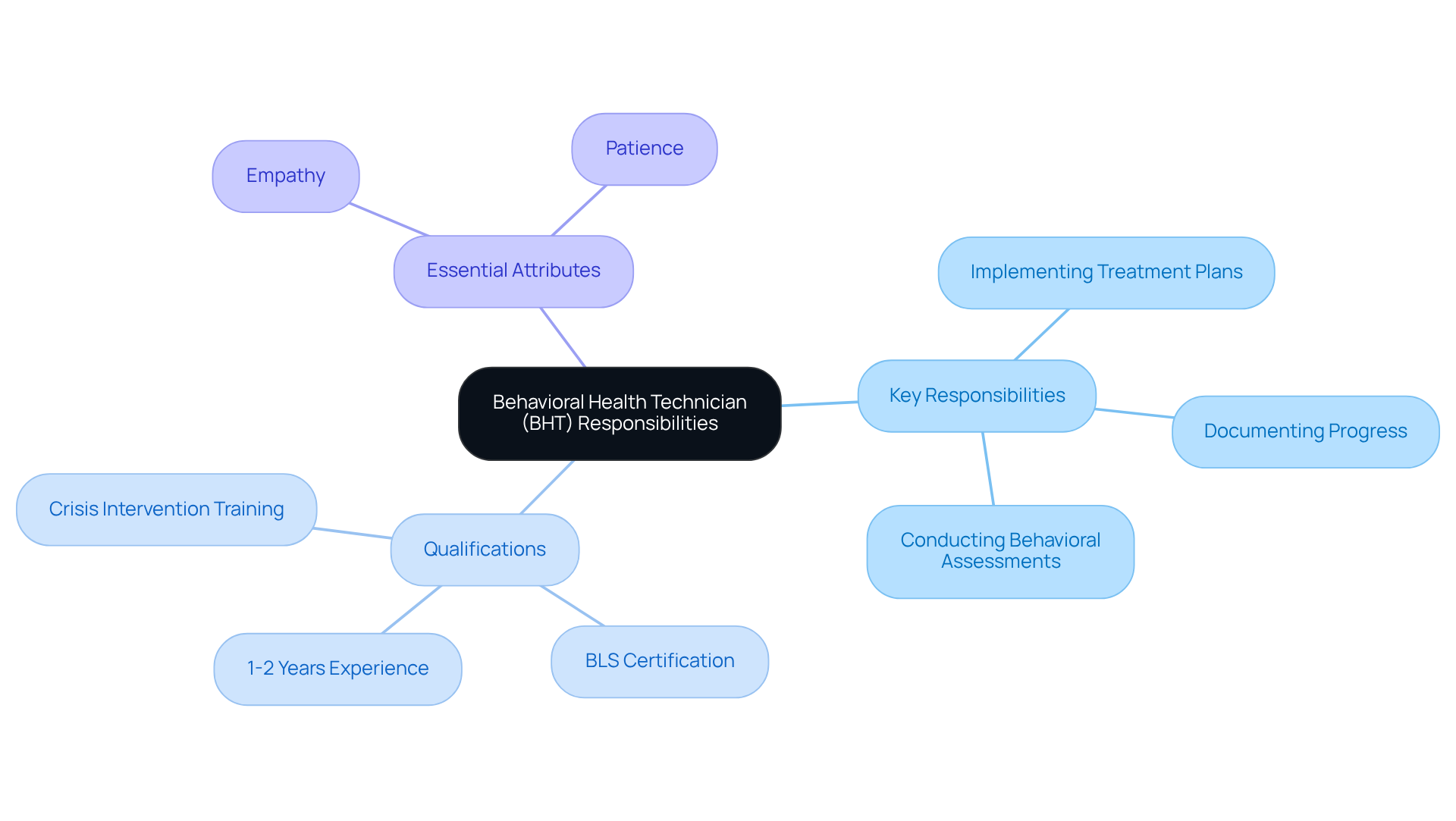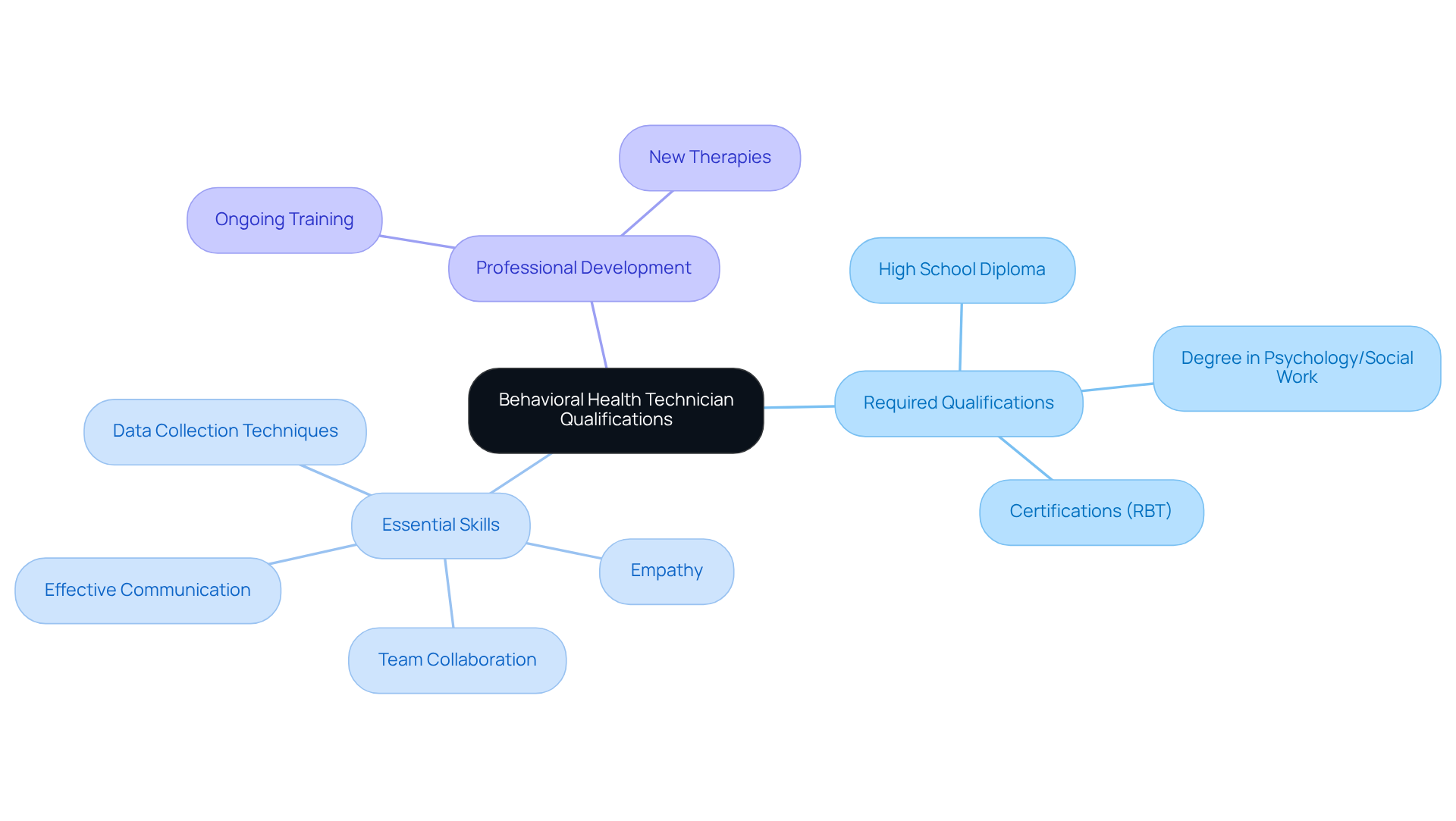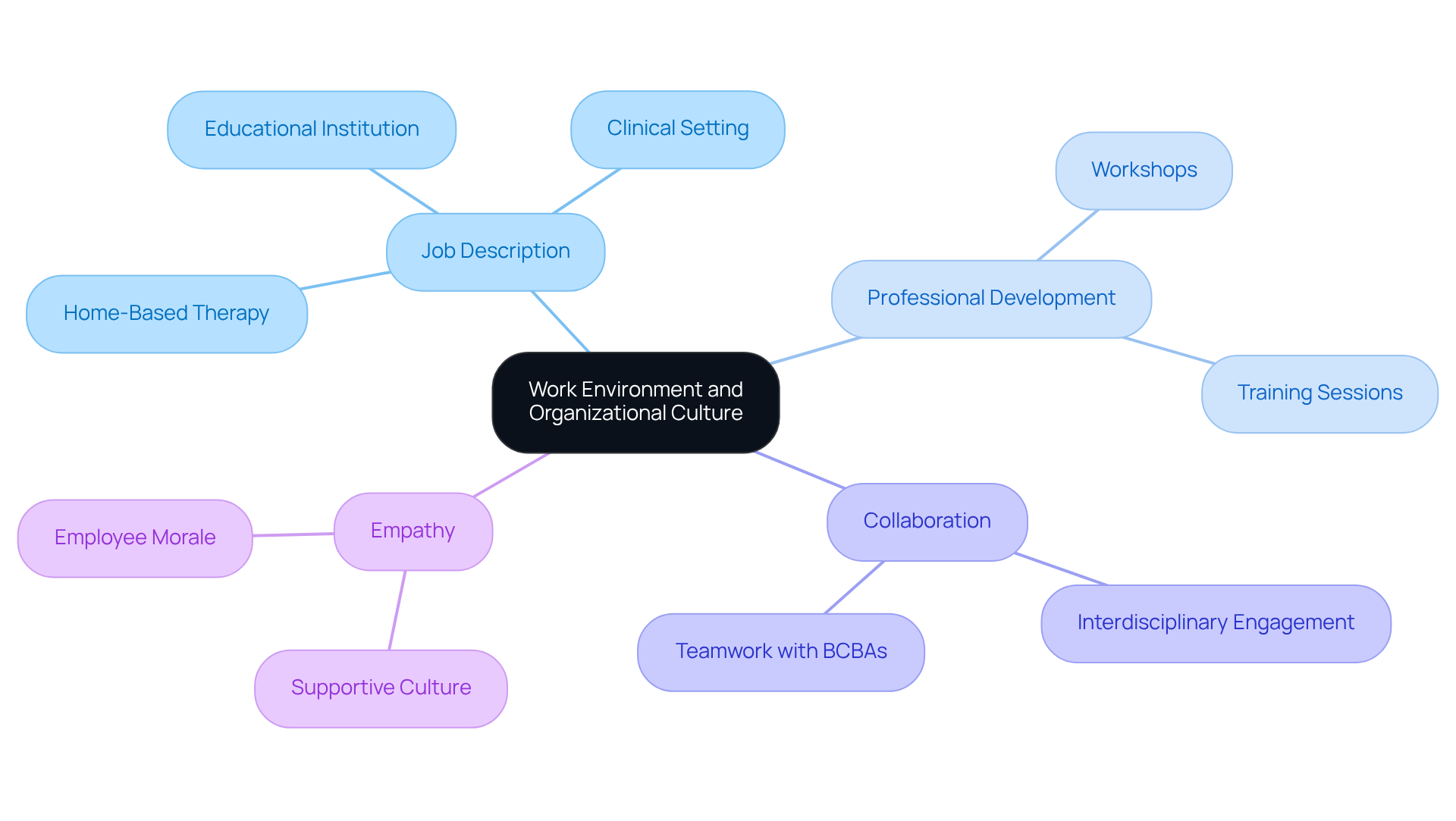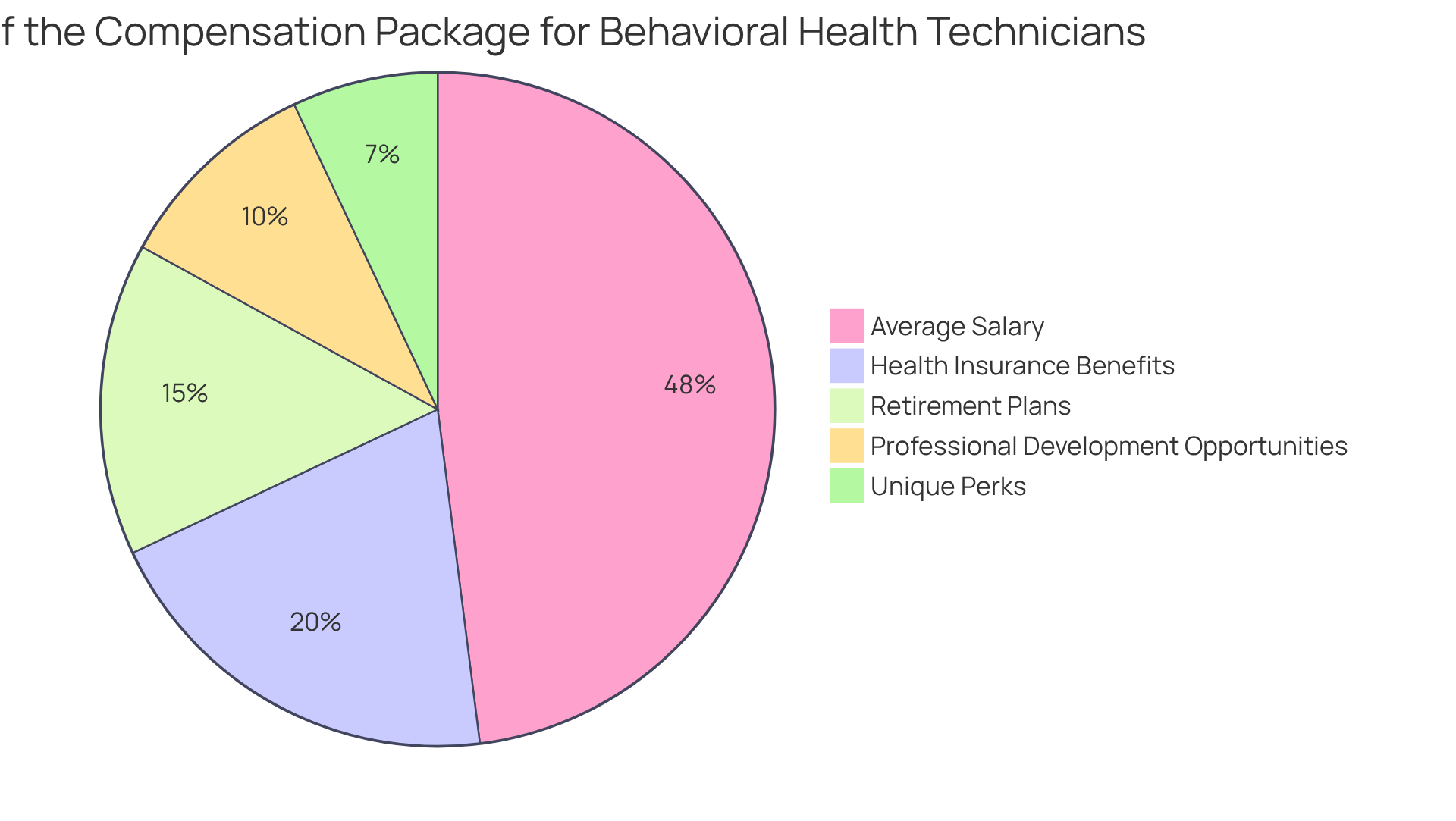July 2, 2025

The key elements of a behavioral health technician job description are critical for attracting the right talent. Responsibilities must be clearly defined, while required qualifications and skills should be specified. Additionally, it is essential to describe the work environment and outline compensation and benefits. A well-structured job description not only clarifies expectations and necessary skills—such as empathy and effective communication—but also underscores the significance of a supportive work culture and competitive compensation. This approach is vital for retaining talent in the behavioral health field.
Are you facing challenges in your hiring process? Consider how a comprehensive job description can enhance your recruitment efforts.
Crafting an effective job description for a Behavioral Health Technician (BHT) transcends merely listing tasks; it is about attracting the right talent to a critical role in mental health care. With the demand for skilled professionals in this field escalating, comprehending the essential components of a BHT job description is imperative.
What key elements must be highlighted to ensure that potential candidates not only meet the qualifications but also resonate with the organizational culture? This article explores the four crucial aspects that define a successful BHT job description, providing insights that can empower employers to create compelling listings that attract qualified applicants.
A well-organized behavioral health technician job description for a Behavioral Health Technician (BHT) is essential. It should clearly outline key responsibilities, including:
For instance, BHTs are often tasked with assisting in the development of individualized treatment plans tailored to each person's unique needs. They actively participate in direct therapy sessions, observe individual behavior for signs of crisis, and collaborate closely with other healthcare professionals to ensure comprehensive care. This collaborative approach not only enhances client outcomes but also fosters a supportive environment for both staff and clients.
By clearly delineating the essential responsibilities specified in the behavioral health technician job description, employers can attract applicants who possess the necessary qualifications and a genuine interest in the role. Statistics reveal that a minimum of 1-2 years of behavioral health or patient care experience is preferred for the BHT position, highlighting the significance of practical experience in this field.
Furthermore, the behavioral health technician job description should underscore the necessity for strong communication skills and the ability to remain composed in stressful situations, which are critical for success in this role. The anticipated salary range for the BHT role is $18.00 to $25.95 per hour, providing potential applicants with a clearer understanding of compensation. Required certifications, such as BLS certification and crisis intervention training, should also be included to offer a comprehensive overview of the qualifications needed for BHTs.
Ultimately, emphasizing , such as empathy and patience, will help attract individuals who embody these characteristics.

In the behavioral health technician job description, employers must clearly specify that applicants should possess at least a high school diploma, with a preference for those holding a degree in psychology, social work, or a related field. To enhance the hiring process, employers can leverage provided by Hire ABA. This service evaluates applicants' experience and career ambitions using advanced job fit scoring, ensuring that behavioral health technicians are matched with roles that align with their skills, preferences, and desired locations. Certifications, such as Registered Behavior Technician (RBT), can significantly enhance a candidate's profile.
Essential skills for the behavioral health technician job description include:
For instance, a successful BHT should be proficient in data collection techniques to track progress, which is crucial for making necessary modifications to treatment plans. Ongoing professional development is vital for healthcare practitioners to stay informed about the behavioral health technician job description, as well as new therapies and treatment methods, ultimately improving the quality of care delivered. Industry leaders emphasize that strong interpersonal skills and a commitment to fostering a supportive environment are critical for behavioral health technicians to effectively connect with patients and facilitate their recovery.

A compelling statistic underscores the necessity of a nurturing work environment: the demand for Board Certified Behavior Analysts (BCBAs) is projected to increase by 25% by 2026. In this competitive landscape, having is essential. The behavioral health technician job description must detail the work environment, specifying whether the role is in a clinical setting, educational institution, or home-based therapy. Furthermore, it should demonstrate the organization's commitment to professional development and support for the behavioral health technician job description.
Organizations that foster a culture of continuous learning through workshops and training sessions should prominently feature this commitment. This not only attracts candidates but also builds a strong foundation for their growth. Emphasizing a collaborative environment, where behavioral health technicians engage closely with Board Certified Behavior Analysts (BCBAs) and other professionals, can significantly attract candidates who prioritize teamwork.
As noted, 'Empathy creates a more robust team.' This supportive culture not only boosts job satisfaction but also leads to better patient outcomes, as behavioral health technicians feel valued and empowered in their roles. By creating a nurturing work environment, organizations can effectively attract and retain qualified professionals, ensuring they remain competitive in the evolving field of behavioral health.

To attract qualified Behavioral Health Technicians, employers must provide a clear and transparent overview of the compensation package. In 2025, the average salary for BHTs is projected to be around $48,000, with a typical pay range between $38,481 and $55,423 annually, depending on experience and qualifications. Employers should explicitly outline salary ranges in the behavioral health technician job description to set clear expectations.
Alongside competitive salaries, benefits serve an essential function in drawing applicants. Comprehensive health insurance, retirement plans, and opportunities for professional development are crucial components. For instance, offering tuition reimbursement for further education or certification can significantly enhance the appeal of the position. Unique perks such as , wellness programs, and employee assistance initiatives can further differentiate the role. As noted by Laura Spawn from Virtual Vocations, "Incorporating flexible work arrangements into a competitive compensation and benefits package is essential, as they address a variety of needs and lifestyles."
Furthermore, conducting surveys or focus groups to collect employee input on preferred benefits can assist in customizing compensation packages to address the particular requirements of prospective applicants. By clearly stating these benefits in the behavioral health technician job description, employers can create a compelling offer that resonates with potential candidates, ultimately enhancing their ability to attract and retain qualified professionals.

A comprehensive behavioral health technician job description is essential for attracting qualified candidates who are not only skilled but also genuinely passionate about supporting mental health. By clearly defining responsibilities, required qualifications, and the work environment, employers can create a compelling narrative that resonates with potential applicants. This clarity streamlines the hiring process and enhances the overall quality of care provided to clients.
Key elements discussed include:
These factors collectively contribute to attracting and retaining talented behavioral health technicians, ultimately leading to improved patient outcomes and a more effective healthcare environment.
In light of the growing demand for mental health services, it is imperative for organizations to prioritize the development of well-structured job descriptions that reflect the dynamic nature of the behavioral health field. By doing so, they enhance their appeal to prospective candidates and contribute to the broader mission of promoting mental health and well-being in the community. Employers are encouraged to take actionable steps towards refining their job descriptions, ensuring they align with the evolving needs of both the workforce and the individuals they serve.
What are the key responsibilities of a Behavioral Health Technician (BHT)?
The key responsibilities of a BHT include conducting behavioral assessments, implementing treatment plans, and meticulously documenting progress. They also assist in developing individualized treatment plans, participate in direct therapy sessions, observe individual behavior for signs of crisis, and collaborate with other healthcare professionals.
What qualifications are preferred for a BHT position?
A minimum of 1-2 years of behavioral health or patient care experience is preferred for the BHT position. This highlights the importance of practical experience in the field.
What skills are essential for success as a BHT?
Essential skills for success as a BHT include strong communication skills and the ability to remain composed in stressful situations. Empathy and patience are also key attributes that are emphasized for this role.
What is the expected salary range for a BHT?
The anticipated salary range for a BHT is between $18.00 and $25.95 per hour.
What certifications are required for a BHT?
Required certifications for a BHT include Basic Life Support (BLS) certification and crisis intervention training.
How does a well-organized job description benefit employers?
A well-organized job description helps employers attract applicants who possess the necessary qualifications and a genuine interest in the role, ultimately enhancing the quality of candidates for the position.
Our expert recruitment strategies and AI-driven sourcing ensure that you receive top-notch candidates quickly, without compromising on quality. Whether you’re looking for BCBAs, Clinical Directors, or RBTs, we’ve got you covered.